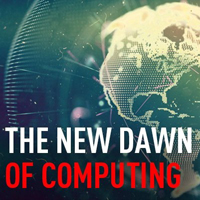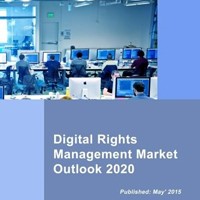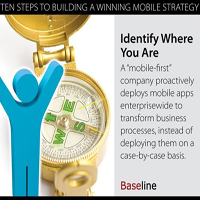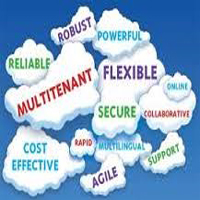In This Issue
- New Dawn Computing
- DCIA at CWF & EAW
- W10: Hdw-Based DRM
- Report from the CEO
- Mobile Gaming & DRM
- A Winning Strategy
- INSIDE Secure’s DRM
- Verizon Secure Cloud
- AWS Next-Gen EC2
- Google Secret Weapon
- Cloud Liberates Cos
- Can’t Afford to Ignore
- 3 Cloud Advantages
- Bandwidth: Frontier
- HCC OKs DOTCOM Bill
- AT&T $100 Million Fine
- Coming DCIA Events
The New Dawn of Computing
Excerpted from B2C Report by Simon Mitchell
 We’ve moved into a brave new dawn of computing power. The agile, dynamic, and ever growing nature of cloud services from a myriad of sources has enabled us to harness capabilities that we could only have dreamed of ten years ago.
We’ve moved into a brave new dawn of computing power. The agile, dynamic, and ever growing nature of cloud services from a myriad of sources has enabled us to harness capabilities that we could only have dreamed of ten years ago.
The ability we have now to spin-up compute power would traditionally have meant either the acquisition of a huge amount of unaffordable servers, or servers we couldn’t justify owning or leasing to satisfy the needs of a department or short term business requirement. How this feels like a distant memory now.
Gone are the days of trying to second guess the annual or long-term storage requirements for non-sensitive data. No longer do we need to work-out how much rack space is going to be needed and how to service that need from a property and physical management perspective.
Now we can go to the cloud in its most native sense for almost every aspect of outsourced IT. From Salesforce.com to Amazon, Microsoft Azure and OpenShift to services from Verizon, Rackspace, and many others, we have the simplicity and promise of lightning fast connectivity and always-on capability. We are truly now the masters of a brave new world able to deliver services and solutions to match the growing expectations of both our internal customers, our users, and our customers… Read More
Join DCIA This Week at CWF & EAW
Excerpted from DCIA Report from the CEO
 The DCIA is proud to join Informa Telecoms & Media in presenting the Cloud World Forum (CWF) this Wednesday and Thursday, June 24th-25th, in London, England.
The DCIA is proud to join Informa Telecoms & Media in presenting the Cloud World Forum (CWF) this Wednesday and Thursday, June 24th-25th, in London, England.
The seventh annual CWF will be Europe / Middle East / Asia’s (EMEA) largest expo for C-level decision makers focusing on Mobile Cloud, Big Data, Social Networking, and the Internet of Things (IoT).
This year’s CWF will be co-located with Enterprise Apps World, and will help attendees build businesses in the cloud, enable digital operations and supply chains, and drive workplace transformation through mobility.
CWF will have more than 8,000 attendees and over 300 speakers.
Sponsors will be leading technology providers in the cloud computing space including Amazon Web Services (AWS), EMC, Google, IBM, Microsoft, and Salesforce.com.
Several special features have been added this year based on ascertainment conducted with a panel of 100 C-level information technology (IT) purchasers and innovators. These include dedicated theaters and end-user case studies… Read More
Windows 10: Welcome to Hardware-Based DRM
Excerpted from iTWire Report by Sam Varghese
 There is a lot about Windows 10 which is out there in the open. There are some things that are a little more closed. Like PlayReady 3.0.
There is a lot about Windows 10 which is out there in the open. There are some things that are a little more closed. Like PlayReady 3.0.
It’s secret to the extent that when a Microsoft executive started talking about it at the WinHEC Conference in Shenzhen earlier this year, the recording was stopped at the point when a detailed discussion on PlayReady 3.0 began.
Simply put, with PlayReady 3.0 — earlier versions are implemented through software and exist in current versions of Windows — Microsoft’s digital rights management (DRM) will exist in hardware.
The hardware components will be developed by partners like Intel, AMD, and Qualcomm.
The benefit? As Microsoft has been putting it, it will enable the user to have access to prime digital content much earlier and in 4K. This, the company hopes to do, by convincing the creators of digital content, or the film studios, that PlayReady 3.0 will also be a solution to the unauthorized downloading of these versions of films online.
Hollywood has long complained about films leaking online and made the most fantastic claims about how much studios lose due to this… Read More
Report from DCIA CEO Marty Lafferty
 The Advancement of Digital Rights Management (ADRM) Working Group is signing-up participants and discussing, refining, and prioritizing action plans targeting five constituencies in advance of the group’s formative meeting taking place later this week.
The Advancement of Digital Rights Management (ADRM) Working Group is signing-up participants and discussing, refining, and prioritizing action plans targeting five constituencies in advance of the group’s formative meeting taking place later this week.
Whether you’d like to actively participate, be a passive observer, or merely provide your viewpoint, we’re interested in learning which of these five proposed initiatives you believe is most important for the ADRM to conduct and which the ADRM should do first.
The most important would deliver the greatest value to members and industry advancement.
The one to do first may be the same or different from that; for example, if it could be completed in a much shorter time and would be worthwhile.
Here are the five choices.
First, focusing on major DRM platform providers — improve interoperability among the handful of major standards-setting entities to benefit integrators, re-sellers, and all participants in the downstream value chain.
Second, focusing on consumer electronics (CE) manufacturers — develop a common set of DRM requirements for set-top, DVR, display hardware, and other connected devices, to streamline development and deployment.
Third, focusing on high-value content distributors — define a standardized approach to levels of protection relative to content value (e.g., extra security for mezzanine-grade, heightened for HD, and basic for SD).
Fourth, focusing on consumer end-users — simplify processes for customers to access multiple instances of differently DRM-ed content across numbers of co-owned devices (i.e., improve ease-of-use).
Or fifth, focusing on DRM industry opponents — respond to public communications that malign DRM in earned media with positive messages supporting the value and benefits of enlightened DRM.
Which one do you believe is most important to the advancement of digital rights management, and which one should the ADRM Working Group do first?
Please send your response to adrm@dcia.info and let us know as soon as possible if you’d like to attend the ADRM Formative Meeting — which will be conducted by video-conference this Thursday June 25th.
Share wisely, and take care.
Mobile Gaming Growth Propels the DRM Market
Excerpted from Digital Journal Press Announcement
 The digital rights management (DRM) market is expected to show significant growth in conjunction with the growing mobile gaming industry, which is fueled by the rapid increase in advancement of mobile devices with high-end multimedia functionalities and continual product innovations.
The digital rights management (DRM) market is expected to show significant growth in conjunction with the growing mobile gaming industry, which is fueled by the rapid increase in advancement of mobile devices with high-end multimedia functionalities and continual product innovations.
The mobile gaming market is anticipated to grow at a compounded annual growth rate (CAGR) of around 23% during 2015-2020, which means it will remain one of the major driving forces behind the growth of the DRM industry.
According to RNCO’s latest research study, Digital Rights Management Market Outlook 2020, the global DRM market has been witnessing significant growth due to increase of its application in various new sectors such as healthcare and education.
The robust growth in revenue is also being driven by the growing market for cloud computing and the mobile gaming industry, which will in the future boost the demand for DRM in the market.
The report covers extensive research and thorough analysis of the DRM market across the globe. It also presents a critical analysis and an unbiased view of the state of the global DRM industry, including the current and future market size… Read More
Ten Steps to Building a Winning Mobile Strategy
Excerpted from Baseline Magazine Report by Dennis McCafferty
 IT organizations can prove their value by leading their companies to a comprehensive and budget-benefiting mobile strategy. For guidance, consider the following ten step-by-step best mobility practices from FeedHenry, which provides cloud-based mobile enterprise application solutions.
IT organizations can prove their value by leading their companies to a comprehensive and budget-benefiting mobile strategy. For guidance, consider the following ten step-by-step best mobility practices from FeedHenry, which provides cloud-based mobile enterprise application solutions.
These were adapted from the eBook “Ten Steps to Shape Your Enterprise Mobility Strategy,” which encourages technology professionals to think like business partners as they pursue mobile initiatives.
Such leadership is clearly needed, as more than one-third of all companies lack a mobile strategy, according to Yankee Group research. By combining resourceful planning with a commitment to continuous improvement, IT teams will help their companies boost profits by increasing the agile deployment of mobile tools.
According to the eBook, “As with any investment, expenditure on mobile initiatives requires teams to define what success looks like. That means being able to measure the return on mobility generated by being able to deliver the right information to the right people on any device at any time, supporting smarter working practices and timelier interactions.”
Here are ten steps to help you build a successful enterprise mobility strategy… Read More
Lufthansa & Panasonic Select INSIDE Secure’s DRM Fusion
Excerpted from INSIDE Secure Press Announcement
 INSIDE Secure, a leader in embedded security solutions for mobile and connected devices, today announced IDAIR GmbH, a joint venture between Panasonic Avionics Corporation and Lufthansa Technik, has deployed INSIDE Secure’s popular Digital Rights Management (DRM) software DRM Fusion to protect content within its system.
INSIDE Secure, a leader in embedded security solutions for mobile and connected devices, today announced IDAIR GmbH, a joint venture between Panasonic Avionics Corporation and Lufthansa Technik, has deployed INSIDE Secure’s popular Digital Rights Management (DRM) software DRM Fusion to protect content within its system.
This In-Flight Entertainment and Communications (IFEC) solution offers a smart, advanced, and customized multimedia environment for VIP passengers. INSIDE Secure’s DRM Fusion enables IDAIR GmbH to acquire movies from Hollywood studios and bring those movies and entertainment directly and safely to viewers on the VIP planes.
Choice of content, especially early release movies, provided on in-flight entertainment systems, is becoming one of the differentiators and factors in passenger satisfaction and selection of airlines.
With in-flight entertainment systems for jets, IDAIR GmbH offers examples of the kind of high-value specialist products dedicated to premium corporate customers.
Thus the need for efficient content protection and a proven solution that stops electronic piracy in its tracks. INSIDE Secure’s Downloadable DRM Fusion Agent provides the critical and studio-approved content protection needed to secure media… Read More
Verizon Delivers Secure Cloud Interconnect to CoreSite
Excerpted from Converge Digest Report
 CoreSite has joined Verizon Enterprise Solutions’ Secure Cloud Interconnect (SCI) service ecosystem. Enterprises using cloud, hybrid cloud, and colocation solutions from CoreSite will be able to tap into Verizon’s networking solution, which features dynamic bandwidth allocation, strong security (encryption), application performance throughput, and quality-of-service (QoS) options.
CoreSite has joined Verizon Enterprise Solutions’ Secure Cloud Interconnect (SCI) service ecosystem. Enterprises using cloud, hybrid cloud, and colocation solutions from CoreSite will be able to tap into Verizon’s networking solution, which features dynamic bandwidth allocation, strong security (encryption), application performance throughput, and quality-of-service (QoS) options.
Service is available initially at four CoreSite data centers in Los Angeles, New York/New Jersey, Chicago, and Silicon Valley; with a fifth site in Northern Virginia expected to come online next month.
Verizon’s SCI now provides connections to six cloud providers (Amazon, Google, HP, Microsoft, Salesforce, and Verizon) and now three data center providers (Equinix, Verizon, and CoreSite).
SCI is built on Verizon’s Private IP network that offers any-to-any connectivity of IP via MPLS, while providing the security and reliability associated with private wide-area networking solutions.
Using Verizon’s Mobile Private Networking service, SCI is further extended to users of its 4G LTE service. “With Verizon’s SCI solution, our customers can tap directly into the leading enterprise-class cloud networking service,” said Ben Green… Read More
AWS Announces Next Generation EC2 Instances
Excerpted from CloudTech Report by James Bourne
 Amazon Web Services (AWS) has announced M4 instances for its EC2 cloud, adding another selection of compute instances to an already well-established list.
Amazon Web Services (AWS) has announced M4 instances for its EC2 cloud, adding another selection of compute instances to an already well-established list.
The M4 instances will deliver processing power with custom 2.4 GHz Intel Xeon E5-2676 Haswell processors, and aim to provide lower network latency and jitter — the variation between packets arriving — through Enhanced Networking. M4 also offers dedicated bandwidth to Amazon Elastic Block Store (EBS).
AWS claims M4 instances are most likely to suit a wide variety of applications, such as relational and in-memory databases, as well as gaming servers.
“Amazon EC2 provides a comprehensive selection of instances to support virtually any workload, and we continue to deliver new technologies and high performance in our current generation instances,” said Matt Garman, AWS VP for EC2. “With these capabilities, M4 is one of our most powerful instances types and a terrific choice for workloads requiring a balance of compute, memory, and network resources,” he added.
AWS customers can launch M4 instances using the AWS Management Console, AWS Command Line Interface, and AWS SDKs… Read More
Google Is its Own Secret Weapon in the Cloud
Excerpted from NY Times Report by Quentin Hardy
 Google is wielding a new weapon against Amazon and Microsoft for cloud computing customers: itself.
Google is wielding a new weapon against Amazon and Microsoft for cloud computing customers: itself.
Google is talking more openly about companies that use its cloud business, and revealing more about its computing resources, perhaps the largest on the planet. These include disclosures about Google’s ultrafast fiber network, its big data resources, and the computers and software it has built for itself.
The aim is to position Google as a company capable of handling the biggest and toughest computational exercises, lightning fast. The disclosures follow earlier moves by Google Cloud Platform, as the search company’s cloud computing business is called, to show off its data analysis capabilities.
Details, like the ability to pass information between Europe and the United States in less than 100 milliseconds, and a practice of fully backing-up user data in nine different locations, make Google seem both cutting-edge and even bigger than most people suspected. But the company may also be borrowing a playbook from Amazon Web Services (AWS), which in 2013 started disclosing some mind-blowing metrics about its global computing network.
At an event Tuesday for Google Cloud Platform — Google’s name for the computing, storage, and networking it sells to business… Read More
Rise of Cloud Computing Liberates Companies
Excerpted from New Zealand Herald Report by Adam Gifford
 Chief information officers (CIOs) who have spent years filling up their data centers are now clearing out space so they can do new things.
Chief information officers (CIOs) who have spent years filling up their data centers are now clearing out space so they can do new things.
That’s the picture Jim Thompson, Chief Engineer and Vice President for Engineering and Supply Chain at technology vendor Unisys, brought to last week’s ninth annual CIO Summit.
He talked about the rise of the digital business and how that is transforming the data center.
Data centers, which are like fridges full of computers, have been changing physically anyway under the effect of Moore’s Law, which describes the steady rate at which silicon chips become smaller, more powerful, and cheaper.
“The fridges are getting smaller. They’re more like wine cellars now,” he says from his home base in Philadelphia, PA.
But while servers have got smaller, the average enterprise has added more of them to host applications that talk to the web and mobile technology.
That sets-up the conversation for cloud computing, how to move some application and tasks offsite… Read More
Cloud Benefits Businesses Can’t Afford to Ignore
Excerpted from ITBusiness.CA Report by Robert Cordray
 Cloud computing has created a range of opportunities for businesses seeking to improve their working process. The technologies, services, and options that are currently available can allow workers to enjoy greater flexibility while providing employers with enhanced security as well as reduced operational costs.
Cloud computing has created a range of opportunities for businesses seeking to improve their working process. The technologies, services, and options that are currently available can allow workers to enjoy greater flexibility while providing employers with enhanced security as well as reduced operational costs.
Cloud computing services make it easy to update a conventional working process and ensure that workers and employers are able to benefit from the unique opportunities this technology is able to provide.
Limiting workers and staff to dedicated terminals and systems can reduce their effectiveness. Businesses that are seeking to make the most of their existing computer systems and equipment will find that cloud computing can provide an ideal solution.
Ensuring that workers can more easily make use of a wider range of systems, devices, and options is often much simpler than many employers may realize.
Cloud computing services that allow professionals to access important documents or to communicate with each other using a variety of options and services reduce the need to work from a central location. From sharing Excel reporting in Hadoop to video calls and teleconferencing, access to the right services and software applications can play a key role… Read More
Three Cloud Computing Advantages beyond Lower Costs
 Cloud computing is now a well-established business practice in NZ. In 2013, 88% of NZ organizations already accessed emails via the cloud. Many businesses understand the financial advantages of using the cloud. Large, irregular, forecasted CapEx can be replaced by smooth, predictable OpEx spending. Using cloud-based services to host your desktop, CRM, analytics and business intelligence is increasingly common. Senior executives have been quick to grasp the cost advantages.
Cloud computing is now a well-established business practice in NZ. In 2013, 88% of NZ organizations already accessed emails via the cloud. Many businesses understand the financial advantages of using the cloud. Large, irregular, forecasted CapEx can be replaced by smooth, predictable OpEx spending. Using cloud-based services to host your desktop, CRM, analytics and business intelligence is increasingly common. Senior executives have been quick to grasp the cost advantages.
The next step is leveraging the cloud to build organization-wide competitive advantages. What other aspects of your organization should migrate (and when), to serve your customers better, faster, cheaper? How can the cloud help differentiate your products and services? As the market shifts, how can the cloud’s enormous compute identify changing customer needs, target new segments and expand into new markets? Rather than just applying the cloud for greater efficiency — how can it actually fuel growth?
It can increase collaboration by removing constraints Working in the cloud removes the constraints of location and time that may be currently hindering your team. It lets your staff work from practically anywhere with an internet connection. Better still, true collaboration across your business can result — fostering innovation. Project teams can be brought together to share their knowledge… Read More
Bandwidth: The New Frontier of Cloud Computing
Excerpted from CSO Report by Drew Turney
 Whether you store data in the public cloud and action it locally, or send workloads to other environments from your own on-premises or legacy systems, there’s one potential weak link in cloud computing of any kind: transport.
Whether you store data in the public cloud and action it locally, or send workloads to other environments from your own on-premises or legacy systems, there’s one potential weak link in cloud computing of any kind: transport.
Moving data to where it needs to be is both a technical and a financial problem that you have to take into account when you’re weighing-up any cloud deployment. After all, you have to provision for the maximum you’ll need, and you’ll still be paying for it even if you’re not using it all the time.
If only there was a way of paying for just the data networking you use on an as-needed basis, driven by application requirements rather than provisioned in large blocks or channels that are destined to sit idle when a workload inevitably slows down or changes.
Enter one of the final frontiers in cloud computing: networking-as-a-service (NaaS). Simply put, it’s the practice of buying network capacity on an incremental basis, just like you do for storage, compute, and platforms in every other aspect of the cloud.
“NaaS makes it possible to consume network services without the need to own any of the infrastructure,” says Malcolm Loro… Read More
House Commerce Committee Speedily OKs DOTCOM Bill
Excerpted from Broadcasting & Cable Report by Gary Arlen
 It took the full House Commerce Committee barely eight minutes to approve by voice-vote the Domain Openness Through Continued Oversight Matters (DOTCOM) Act this morning. In opening the brief mark-up session, Committee Chairman Fred Upton (R-MI) described adoption of the law as “the next step in the Internet’s evolution” and urged that, “we must do so with an eye toward preserving the Internet’s vitality and character.”
It took the full House Commerce Committee barely eight minutes to approve by voice-vote the Domain Openness Through Continued Oversight Matters (DOTCOM) Act this morning. In opening the brief mark-up session, Committee Chairman Fred Upton (R-MI) described adoption of the law as “the next step in the Internet’s evolution” and urged that, “we must do so with an eye toward preserving the Internet’s vitality and character.”
The bill (HR 805) requires certifications and an opportunity for congressional review to ensure that any transfer of US involvement over the Internet Assigned Numbers Authority (IANA) does not enable other countries to grab greater control over critical Internet functions. A draft of the proposed law had breezed through the Telecommunications Subcommittee last week with bipartisan support.
The only kerfuffle in Wednesday’s discussion came from Congressman John Shimkus (R-IL), who asked that in the final draft of the bill, the term “adopted” be used. He pointed out that Lawrence Strickling, head of the National Telecommunications and Information Administration (NTIA), has urged that the legislation use the term “adopted” rather than “implemented” to describe Congress’s role in future international agreements. Shimkus, in what he called “out of fun,” noted that Strickling’s message to the Committee actually used the word “implemented” (or a variation) at least three times… Read More
AT&T Hit with $100 Million Fine
Excerpted from Washington Post Report by Brian Fung
 The Federal Communications Commission (FCC) slapped AT&T with a $100 million fine Wednesday, accusing the country’s second-largest cellular carrier of improperly slowing down Internet speeds for customers who had signed-up for “unlimited” data plans.
The Federal Communications Commission (FCC) slapped AT&T with a $100 million fine Wednesday, accusing the country’s second-largest cellular carrier of improperly slowing down Internet speeds for customers who had signed-up for “unlimited” data plans.
The FCC found that when customers used up a certain amount of data, watching movies or browsing the Web, AT&T “throttled” their Internet speeds so that they were much slower than normal. Millions of AT&T customers were affected by the practice, according to the FCC.
The fine, which AT&T says it will fight, is the largest ever levied by the agency.
AT&T implemented the practice in 2011, prompting thousands of customers to complain to the FCC, according to an agency statement.
By not properly disclosing the policy to consumers who thought they were getting “unlimited” data, the company violated the FCC’s rules on corporate transparency, FCC Chairman Tom Wheeler said.
“Consumers deserve to get what they pay for,” Wheeler said. “Broadband providers must be upfront and transparent… Read More
Coming Events of Interest
Freescale Technology Forum — June 22nd-25th in Austin, TX. FTF, this year focusing on the Internet of Things (IoT), is the heart of discovery, imagination and innovation. Together we will strategize and design the next market-shifting products.
Cloud World Forum — June 24th-25th in London England. This marquee event is presented by Informa Telecoms & Media. Co-located with the seventh annual major international conference will be Enterprise Apps World.
ADRM Working Group Formative Meeting — June 25th via global videoconference. The DCIA sponsored working group will kick-off with prioritization of action plans targeting five constituencies: DRM Platform Providers, CE Manufacturers, Content Providers, Consumers, and DRM Industry Opponents.
Cloud Computing Boot Camp — July 30th in Washington, DC. Designed for small-to-medium businesses (SMBs) and their counterparts in government agencies and healthcare organizations whose responsibilities include evaluating, purchasing, and implementing cloud-based solutions.
Digital Hollywood Fall — October 19th-22nd in Marina Del Rey, CA. The future of the entertainment industry. Digital Hollywood debuted in 1990 and has from its start been among the leading trade conferences in its field.
Internet of Things World Forum (IoTWF) — December 6th-8th in Dubai, UAE. IoTWF is an exclusive event that brings together the best and brightest thinkers, practitioners, and innovators from business, government, and academia to accelerate the market adoption of the Internet of Things.
